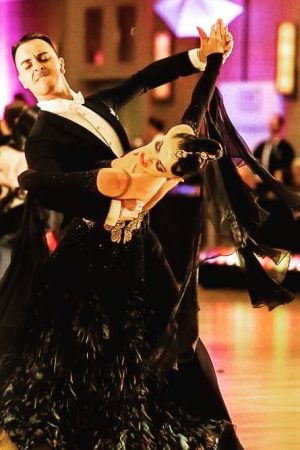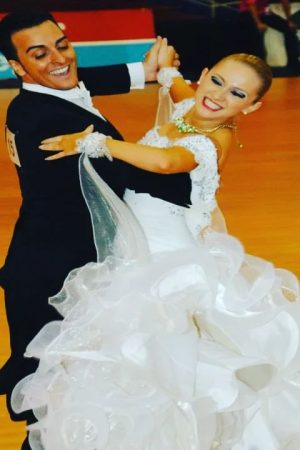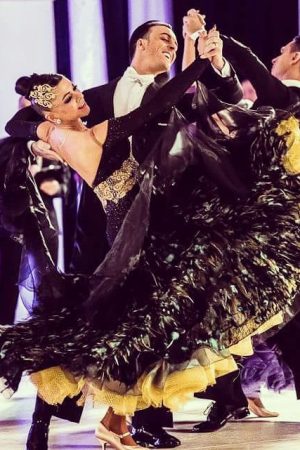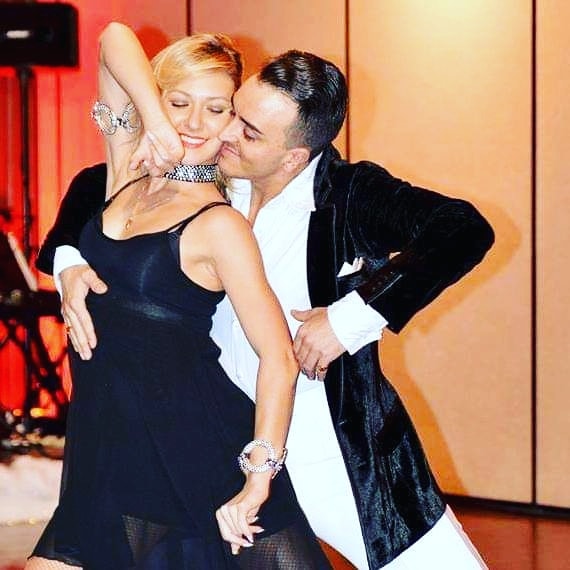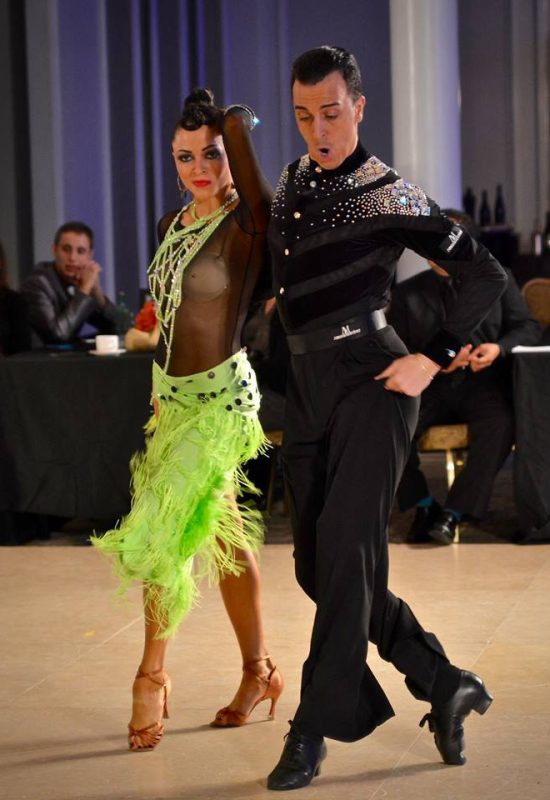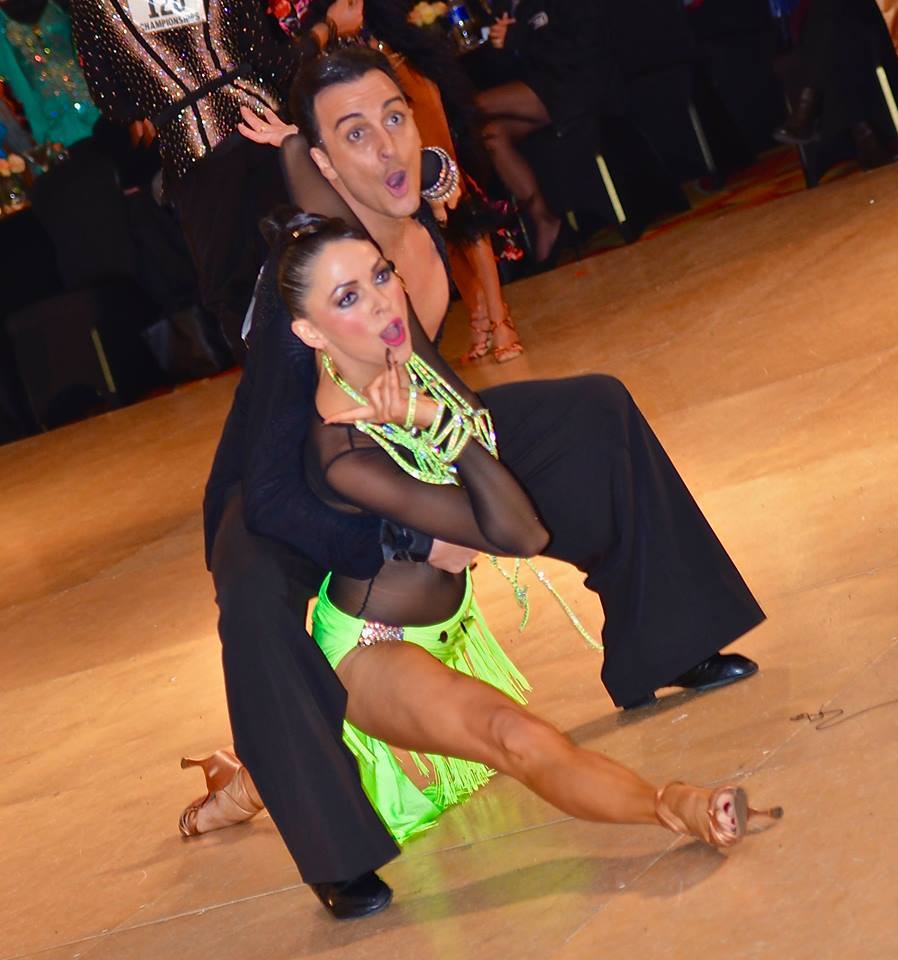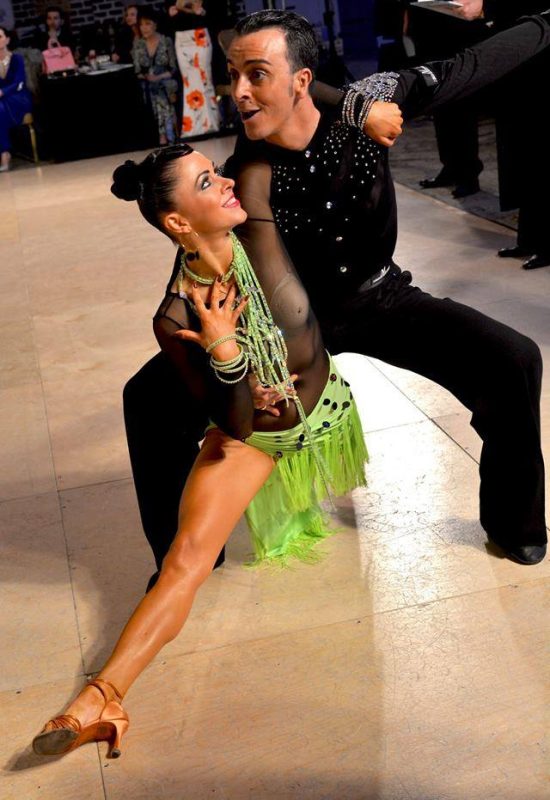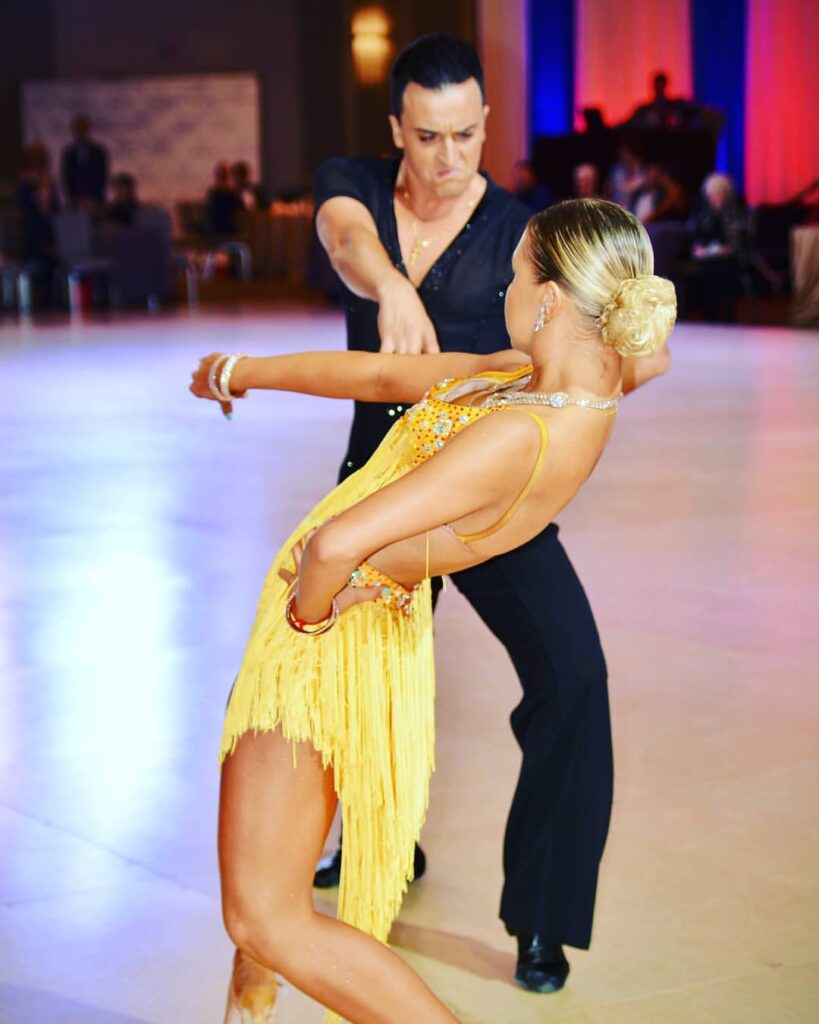International Latin
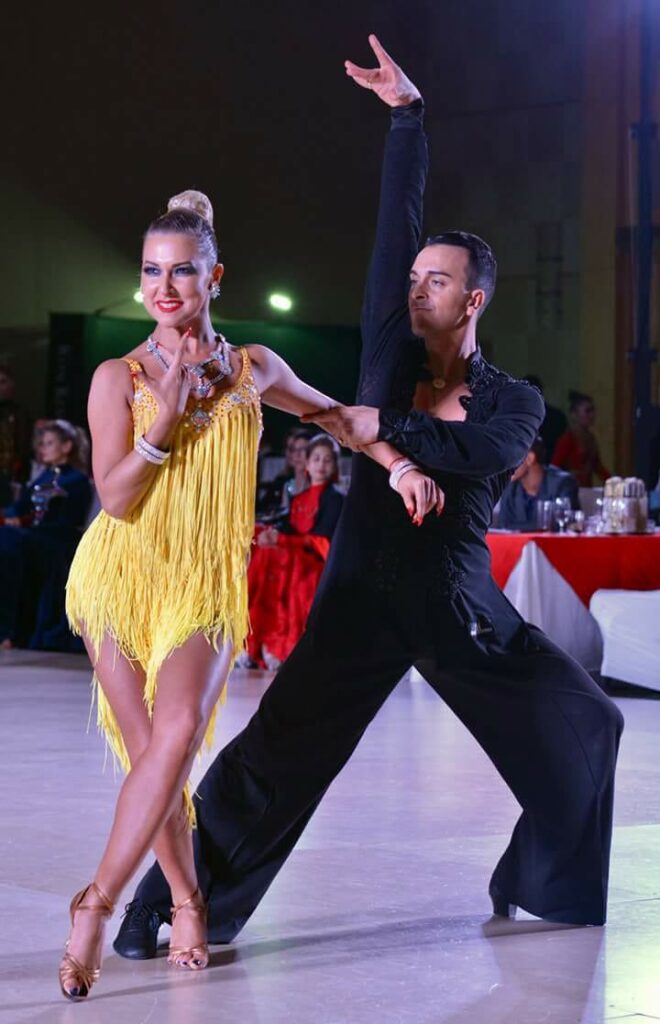
International Latin
Latin International Dance refers to a category of partner dances that originated from Latin American countries and are widely performed and competed internationally. These dances are known for their passionate and energetic movements, rhythmic footwork, and expressive body actions. Latin International Dance encompasses a variety of styles, each with its own unique characteristics and music. Here are some popular Latin International Dances:
Salsa: Salsa is a vibrant and lively dance that originated in Cuba and has since spread across Latin America and the world. It combines elements of Afro-Cuban rhythms, Mambo, and various Latin dance styles. Salsa is characterized by its syncopated steps, intricate turns, and dynamic partner connections.
Cha-Cha-Cha: The Cha-Cha-Cha originated in Cuba and gained popularity in the 1950s. It features quick and playful footwork, syncopated steps, and lively hip movements. Cha-Cha-Cha is known for its infectious rhythm and flirtatious character.
Rumba: Rumba is a sensual and romantic dance style that originated in Cuba. It is characterized by its slow, expressive movements, and fluid hip motions. Rumba focuses on the connection between partners and conveys passion, desire, and storytelling through its movements.
Jive: Jive is a fast-paced dance style that evolved from swing dances in the United States and gained popularity in Europe. It is characterized by its lively and energetic footwork, kicks, and flicks. Jive is often performed to upbeat music, such as Rock ‘n’ Roll and Boogie Woogie.
Paso Doble: Paso Doble is a theatrical and dramatic dance that originated in Spain. It is inspired by the bullfight and portrays the roles of the matador and the cape. Paso Doble involves strong, staccato movements, sharp turns, and powerful poses, reflecting the intensity and passion of a bullfight.
Samba: Samba is a lively and rhythmic dance style that originated in Brazil. It is known for its energetic hip movements, quick footwork, and joyful expression. Samba is often associated with the vibrant Brazilian Carnival and is performed to lively Samba music.
Argentine Tango: Argentine Tango is a passionate and improvisational dance style that originated in the late 19th century in Argentina. It emphasizes close partner connection, intricate footwork, and expressive movements. Argentine Tango is characterized by its intense emotions and subtle nuances between the dance partners.
how we teach
Our Dance Technique
Engaging in Latin International Dance offers numerous benefits, both physical and mental:
Cardiovascular Fitness: Latin International Dance involves continuous movement and energetic footwork, making it an excellent cardiovascular workout. Regular participation can improve endurance, stamina, and overall cardiovascular health.
Muscle Tone and Flexibility: The rhythmic movements, turns, and body actions in Latin dances help tone and strengthen muscles, particularly in the legs, hips, and core. These dances also promote flexibility and enhance the range of motion.
Coordination and Balance: Latin International Dance requires precise footwork, body isolations, and coordination with a partner. Practicing these dances can improve coordination, balance, and overall body control.
Mental Stimulation: Learning and executing intricate dance patterns, timing, and partnering techniques in Latin International Dance provide mental stimulation. It enhances cognitive abilities, memory recall, and multitasking skills.
Self-Expression and Confidence: Latin International Dance encourages self-expression, creativity, and confidence. It allows individuals to showcase their personality and emotions through movement, fostering self-assurance and positive body image.
Cultural Appreciation: Engaging in Latin International Dance provides an opportunity to appreciate and embrace the rich cultural heritage and traditions of Latin American countries. It allows dancers to connect with the music, history, and cultural expressions associated
